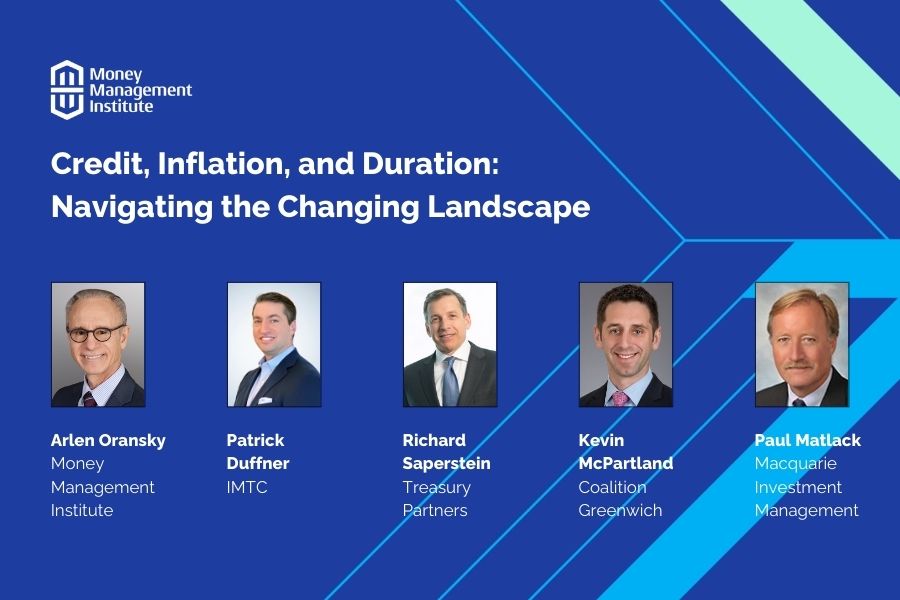Fixed Income and the Ballot Box: Caution Ahead of the 2020 Election

The upcoming 2020 election is more than just a race to the White House. Forward-looking investors are modeling scenarios that include a single party controlling both chambers of Congress and a divided government as well. In part one of this series on fixed income and the 2020 election, we examined the potential scenarios and how it may affect markets. In the second part of the series, we are exploring how fixed income managers can leverage the insights gained from these scenarios to be proactive despite the number of unknowns.
Given recent Treasury rates and the rebound in credit spreads, fixed income managers can take some easily harnessed gains from higher bond prices and sit on the sidelines with the proceeds. If wrong, the downside of sitting out a portion of your bond portfolio is much lower than it was several months ago, and portfolio managers would not give up that much in terms of income or potential performance. After all, it’s only the opportunity cost of not being fully invested that’s at stake and a short-term outlook full of uncertainty shouldn’t be the cornerstone of any portfolio manager’s investment strategy.
Three key scenarios for fixed income portfolio managers
Today’s market is moving in the same direction and it’s okay for portfolio managers to be cautious. Yields are already low and there is a minimal impact on income to taking a wait and see approach while increasing liquidity. As we enter the final stretch of the 2020 election cycle, there are three possible scenarios facing bond managers:
- Bonds Sell-off: This is the ideal scenario for an investor waiting out the election impact. As Treasuries sell off and yields creep higher on borrowing concerns, credit spreads can compress or widen but the net reinvestment yield will still increase.
- Markets Remain Status Quo: Rates and credit spreads remain unchanged while the cost of a risk mitigation strategy is the lost income over the next three months—roughly 5 bps of annualized income with an intermediate duration target.
- Market Rallies: The largest downside risk to sitting on the sidelines is if Treasury yields go significantly lower and spreads happen to compress or stay the same – unlikely in our estimate but the worst-case, nonetheless. For example, sitting on 10% cash reserves that’s earning close to zero, would only cost the portfolio 25 bps when considering lost income and missed total returns.
At this point in time, with so much uncertainty in the election, there is little downside to deploying a risk mitigation strategy. When portfolio managers map out their strategies, while accounting for all the unknown factors, it’s easy to see very limited upside today. In the following scenario, fixed income managers would be best served by mitigating any risks with less exposure to the market and deploying dry powder when the market is less constructive.
Portfolio strategy: a case study on risk mitigation
We took a look at how to position a portfolio against the ICE BofA Intermediate Government/Credit Index going into the election. We aimed to rebalance a portfolio that was overweight risk (long duration and long credit) towards a much higher quality portfolio with a higher cash allocation. Additionally, we shifted duration to reflect a short duration bias versus the index. The ~10% higher cash allocation was achieved through gains taken in single A & BBB corporate bonds; this is one area of the market that has rebounded dramatically on the back of Fed support since the outbreak of the virus in March. Selling these corporate bonds served a dual purpose; (1) protecting the existing value of the portfolio and (2) keeping cash on hand to take advantage of any dislocations on the back of the election.
The increase in cash holdings of 10.45% leaves room for future investments in corporates once the market digests the impact of the upcoming general election. Additionally, with an overall average credit quality of A+, there is the flexibility to take on more risk once the outlook is cleaner in November. We made an assumption that rates will be higher due to the need for government spending and borrowing to continue regardless of which party takes control of the White House and Congress come November. The portfolio is roughly -0.50 years short the benchmark duration target (3.95 portfolio vs. 4.52 index) given the higher probability that rates will increase following the election.
In our scenario, the opportunity cost of not being fully invested decreases if portfolio managers hit the pause button and the market remains relatively flat. Additionally, as an investor, they would give up a minimal amount of return as steepening and potential widening allows them the agility to pivot and extend duration.
Given the uncertainty and volatility leading up to the election, many portfolio managers are considering the potential scenarios that lead to the highest upside and lowest downside. Fixed income managers should reposition their portfolios now as liquidity can dry up quickly. Even if the election results were known, investors would still have many unknown outcomes on policy and market shifts. This is no time to be a hero. So why not take this time to be prudent and wait it out?
Technology is only as good as how it is used. NOVA is designed by and for fixed income professionals, empowering them to take action and make decisions quickly and accurately with real-time data and analytics capabilities. It allows you to future-proof your business; driving operational efficiencies, mitigating risk and delivering performance, to ultimately enable business growth.
This paper is intended for information and discussion purposes only. The information contained in this publication is derived from data obtained from sources believed by IMTC to be reliable and is given in good faith, but no guarantees are made by IMTC with regard to the accuracy, completeness, or suitability of the information presented. Nothing within this paper should be relied upon as investment advice, and nothing within shall confer rights or remedies upon, you or any of your employees, creditors, holders of securities or other equity holders or any other person. Any opinions expressed reflect the current judgment of the authors of this paper and do not necessarily represent the opinion of IMTC. IMTC expressly disclaims all representations and warranties, express, implied, statutory or otherwise, whatsoever, including, but not limited to: (i) warranties of merchantability, fitness for a particular purpose, suitability, usage, title, or noninfringement; (ii) that the contents of this white paper are free from error; and (iii) that such contents will not infringe third-party rights. The information contained within this paper is the intellectual property of IMTC and any further dissemination of this paper should attribute rights to IMTC and include this disclaimer.





